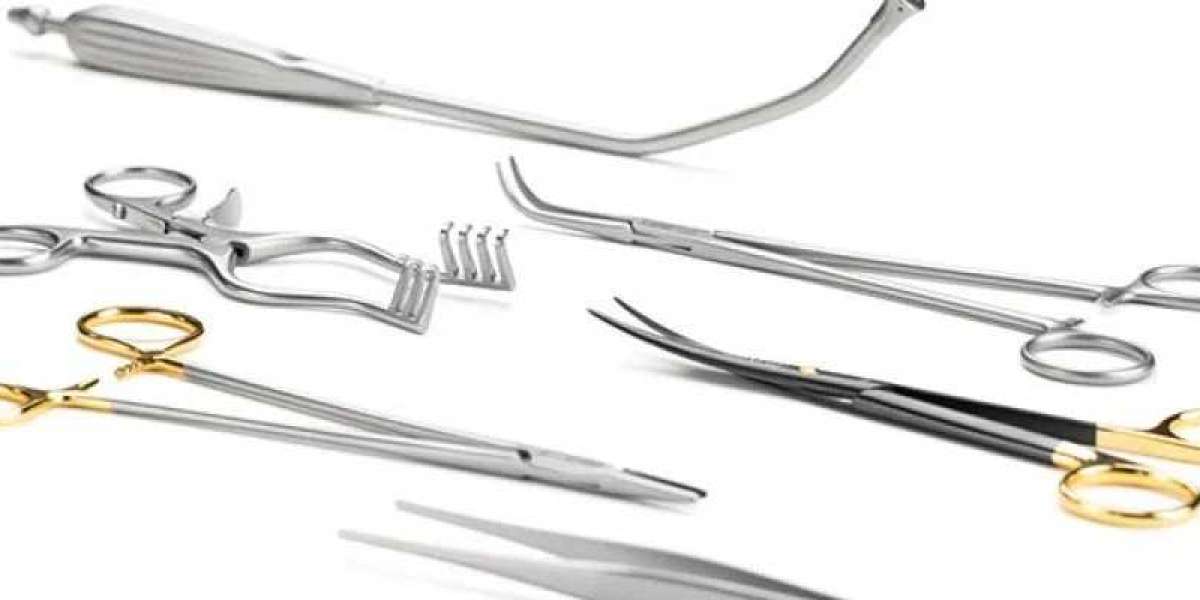In the operating room, precision and reliability are paramount. The success of any surgical procedure depends heavily on the skill of the medical team and the quality of the instruments they use. Understanding the function of each tool is fundamental for every healthcare professional, from surgeons to surgical technologists. These instruments are extensions of a surgeon's hands, designed for specific tasks that demand accuracy and control.
Azeemed Instruments® is dedicated to providing high-quality surgical tools that meet the rigorous demands of medical professionals. Every instrument is crafted to ensure optimal performance, durability, and safety. Exploring the world of a common surgery tools surgical instrument reveals a fascinating blend of engineering and medical science, where each piece has a distinct role in the intricate process of healing. This guide will walk you through the essential categories of these instruments, explaining their functions and importance in modern medicine.

Cutting and Dissecting Instruments
The first step in many surgical procedures is making an incision, which requires tools designed for sharp, clean cuts. Cutting and dissecting instruments allow surgeons to separate and remove tissue with precision. The most recognizable tool in this category is the scalpel, which consists of a reusable handle and a disposable blade. Different blade shapes and sizes are used depending on the type of incision needed, from long, straight cuts to small, delicate ones.
Beyond scalpels, scissors are also vital for cutting tissue, sutures, and other materials. Surgical scissors come in various forms, such as Mayo scissors for cutting heavy tissues and Metzenbaum scissors for finer, more delicate dissections. The design of these instruments, whether curved or straight, sharp or blunt-tipped, is tailored to specific surgical needs. A high-quality common surgery tools surgical instrument like a well-crafted pair of scissors ensures that the surgeon can navigate complex anatomical structures without causing unnecessary trauma to surrounding tissues.
Grasping and Holding Instruments
Once an incision is made, surgeons need to hold and manipulate tissues to get a clear view of the surgical site. Grasping and holding instruments are designed for this purpose. Forceps are the primary tools in this group, acting like tweezers to grip or move tissue. They can be toothed or smooth, depending on the type of tissue being handled. For instance, Adson forceps with teeth provide a firm grip on skin, while DeBakey forceps have a gentle, atraumatic design suitable for delicate blood vessels.
Clamps, also known as hemostats, are another essential type of holding surgical instrument. Their main function is to control bleeding by clamping blood vessels. Instruments like the Kelly or Crile clamps are used to secure vessels before they are ligated or cauterized. The ability to effectively manage bleeding is critical for maintaining a clear operative field and ensuring patient safety. The reliability of each common surgery tools surgical instrument in this category is crucial for a successful outcome. Azeemed Instruments® provides a comprehensive range of forceps and clamps designed for superior control and reliability.
Retracting and Exposing Instruments
During a procedure, it is essential to keep the surgical site open and visible. Retracting instruments are used to hold back tissues, organs, and the edges of an incision, providing the surgeon with an unobstructed view and access to the area of interest. Retractors can be handheld or self-retaining. Handheld retractors, such as the Senn or Army-Navy retractors, require an assistant to hold them in place.
Self-retaining retractors, like the Weitlaner or Balfour retractors, have a locking mechanism that keeps them open without assistance. This frees up the hands of the surgical team and provides consistent exposure throughout the operation. The choice of retractor depends on the depth and location of the surgical site. Proper exposure is a fundamental aspect of surgery, and the right common surgery toolsfor retraction makes complex procedures more manageable and safer for the patient.
Suturing and Stapling Instruments
After the primary surgical work is complete, the incision must be closed. Suturing and stapling instruments are used to bring tissues together and facilitate healing. Needle holders are perhaps the most important tool in this category, used to grasp and guide the suturing needle through tissue. The design of a needle holder, with its locking mechanism and textured jaws, provides a secure grip on the needle, allowing for precise stitch placement.
In some cases, surgical staplers are used as an alternative to sutures for closing skin incisions or connecting internal tissues. Staplers can be faster to use and may create a more uniform closure. Whether using traditional sutures or modern staples, the goal is to close the wound securely while minimizing tissue damage and scarring. Every common surgery tools surgical instrument used for closing a wound, from the needle holder to the suture scissors, plays a part in the patient's recovery process, highlighting the importance of using dependable tools. Professionals trust Azeemed Instruments® for their suturing needs, knowing they are using tools built for excellence.



